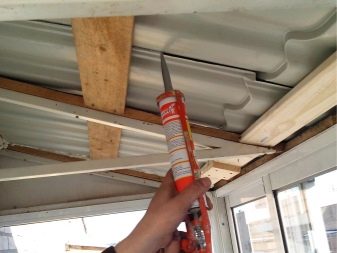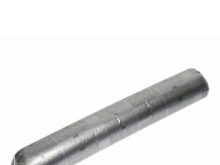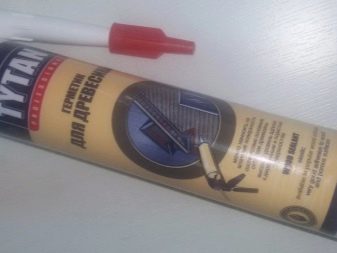Features sealants Tytan Professional
The market of building materials is constantly being improved, offering customers a growing range of products. And if not so long ago, sealing of seams was a real problem, today this issue is easily solved by using sealants. The line of these products is updated every day, and today you can call one of the most popular samples - Tytan Professional sealant.
Special features
All Tytan Professional sealants are presented in a volume of 310 ml, and the tubes are specifically designed for use with a construction gun. This ensures smooth application and optimum product consumption. If you need more material, you can buy a 600 ml package, but in this case, the manufacturer produces a sealant in the foil, which is less convenient when working.
The color palette of materials is quite diverse, but most silicone products are presented in white. Some types have different shades, for example, universal models are available (in addition to white) in gray, red, transparent, brown and black. Materials for glass and mirrors are made exclusively colorless or white. For works with wood and laminate, acrylic colored sealants are used, they have such shades as beech, ash, pine, oak and others. Sealants for roofing are available in black, polyurethane, besides him, have a white and gray tone in their lineup.
If we talk about the technical characteristics, the materials have the consistency of the paste, they can be used at temperatures from +5 to +40 degrees. The film is formed in 20-30 minutes, the sealant can withstand temperatures from -40 to +110 degrees. The shelf life of the product is 12 months from the date of manufacture, and it is recommended to store it at +5 - +25 degrees.
As a rule, the necessary information is already indicated in the title of the material.
Types and application
The line of sealants Tytan Professional can be divided into several types:
- silicone;
- roofing;
- polyurethane;
- acrylic;
- specialized.
Silicone sealants perfectly tolerate high humidity, temperature drops, exposure to adverse environmental conditions,chemical elements and much more.
Silicone compounds also have their own division:
- Universal or neutral silicone sealants are used in various areas of construction work. They adhere well to different surfaces, easily tolerate adverse weather conditions, exposure to moisture and ultraviolet radiation.
- Sanitary sealants are recommended for use in rooms with high humidity. They have special additives that protect the surface from mold and fungus.
- Glass is ideal for good adhesion to materials with a non-porous structure.
- Products labeled "for aquariums", environmentally friendly and does not pose a danger to its inhabitants, respectively, is waterproof.
- High-temperature compounds can withstand temperatures up to +250 - + 300 ° C, are used for sealing in the automotive industry and shipbuilding, withstand exposure to chemicals.
Roofing sealants produced specifically for roofing. They perfectly withstand the adverse effects of the environment, precipitation and humidity, sudden temperature fluctuations.The bitumen-rubber composition is in high demand among consumers. It seals well joints and seams, is very elastic and reliable.
Roofing sealant for emergency repair can be used in difficult conditions, for example, under water, at low temperatures and snow. This is made possible by the composition, which includes synthetic rubber, and, in addition, reinforced by the addition of fibers.
Polyurethane sealants are more elastic than other products of the manufacturer, in addition, they are suitable for painting. Polyurethane withstands exposure to moisture and ultraviolet rays, which makes it very convenient for work not only inside but also outside the room. Elastic cork sealant can be used to seal flooring, interpanel joints.
Polyurethane sealants are divided into 3 groups:
- PU 25 is designed to work with facades, window and door openings, walls and drainpipes;
- PU 40 sealant is used in road works, in the automotive industry and shipbuilding, in the railway industry;
- PU 50 is used to set up various designs.
Acrylic sealants adhere well even to wet and porous substrates. They are easy to wash, can be painted. Used mostly for sealing interpanel seams and cracks. The line Tytan Professional produces acrylic sealants for surfaces made of wood and galvanized metal, cold-resistant compounds that can withstand low temperatures.
A separate group is represented by specialized formulations.
Among them are the following materials:
- Silicone acrylic sealant. The material is designed to work in kitchens and bathrooms, is economical, well coupled with various materials. This composition combines the main characteristics of acrylic and silicone.
- Silicate mixtures used for sealing fireplaces and stoves. They are heat-resistant, eco-friendly, non-toxic, fire-resistant, withstand temperatures up to +1500 degrees.
- Acrylic Bath Compounds adhere well to acrylics and various types of plastic. They include fillers that protect the surface from mold and fungus.
- Silicone sealant for marble it is used on stone and other porous bases.
The composition of the line of sealants Tytan Professional includes additives that are different in their properties, which allows you to use materials for work in various fields and select directly those that are needed in a particular case.
Consumers are guided by several basic parameters.
- The important point is the temperature, since the use and operation of various materials must be made at different indicators. Only in this case, the manufacturer can guarantee the result of the work performed.
- The elasticity of the sealant is very important. It must be considered when selecting the composition for moving structures.
- And, finally, the specifics of the work also has its influence on the choice of composition.
The wide scope of application allows you to use Tytan Professional sealants in the automotive, shipbuilding, railway industry, in private and apartment buildings, for sealing furnaces and pipes, and in other, very diverse areas, and excellent reviews leave no doubt as to the material.
How to use?
- The first thing to do before using a sealant is to thoroughly clean the surface.It is necessary to take into account how compatible the basis and composition are, the correct selection of material will directly affect the result of the work performed.
- The base is cleaned according to its type. Stone and concrete are cleaned with a special brush that removes not only dust, but also paint residues and other dirt. Metallic substrates and plastics should be treated with a solvent. If there is mold and fungus on the substrate, the surface must first be sanitized. It should be borne in mind that for this type of work it is impossible to use soap, since it is not combined with sealing means.
- The seam can have a width of 10 to 20 millimeters and a depth of no more than 12 millimeters. In more serious cases, a sealing cord should be used.
- After the base has dried, you can glue it with masking tape to help avoid contamination. Surfaces of unknown origin should be tested for compatibility with an inconspicuous area before using sealants.
- Installing the tube in the gun is carried out according to the instructions. After this procedure, you can apply sealant.It is recommended to perform the action under pressure to make the seam more durable.
- After that, the material is smoothed, and the masking tape is removed. The material dries and becomes covered with a film rather quickly, after which it hardens, depending on the layer thickness and external conditions. On average, it occurs at a rate of about 2 millimeters per day.
Tips
To work with Tytan Professional sealants, you will need to purchase a construction pistol that will help to economically and correctly apply the compound. Basic safety instructions are also required. If the material comes in contact with skin or clothing, it should be carefully removed. Instructions for use are located on the product packaging. Subject to these conditions and a competent approach, the result of work will delight consumers over the years.
For information on how to use Tytan Professional sealant to seal the roof, see below.





















































